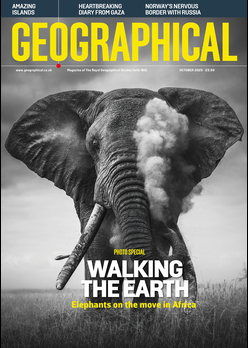
Have experts missed a huge tropical ozone hole that has existed since the 1980s?
By
In July, an extraordinary research paper, documenting a huge, previously undetected ozone hole over the tropics, prompted a flurry of news stories. Said to be seven times the size of the well-known ozone hole over Antarctica, the discovery is cause for ‘great global concern’, according to Qing-Bin Lu, a professor at the University of Waterloo, Canada, and author of the report. His research suggests that, unlike the Antarctic hole, which only opens in spring, the tropical hole remains open year-round, putting roughly half the world’s population at higher risk from ultraviolet radiation. Most surprisingly of all, Lu claims that the hole has existed since the 1980s.
However, the paper and the results it reports aren’t supported by all ozone watchers. Some experts, including Paul Young, an atmospheric scientist at Lancaster University and lead author of the forthcoming Scientific Assessment of Ozone Depletion (2022), sponsored by the World Meteorological Organization and the United Nations Environment Programme, categorically refute Lu’s conclusions. ‘There is no tropical ozone hole,’ Young says. ‘If it was there, I will stick my neck out and say that it would have been found.’
So how can scientists have such different takes?
Some of the controversy comes down to the use of different definitions. On average, the concentration of ozone (a highly reactive gas composed of three oxygen atoms) in the ozone layer is 300 Dobson Units, which, when compressed to the atmospheric pressure at the Earth’s surface, would form a layer three millimetres thick. The conventional definition of an ozone hole is when this concentration drops below 220 Dobson Units. However, Lu defines a hole as ‘an area of ozone depletion greater than 25 per cent relative to the undisturbed atmosphere (when there were no significant chlorofluorocarbons in the stratosphere)’. Chlorofluorocarbons are man-made, ozone-depleting chemicals used widely since the 1930s, which contributed significantly to the Antarctic ozone hole but which are now largely banned. ‘No ozone hole over the tropics would be observed by the conventional definition of an ozone hole,’ Lu notes in his report, ‘as the total ozone over the tropics was above 220 Dobson Units even with a loss by 56 per cent.’
In his study, Lu used ground- and satellite-based datasets of ozone levels, stratospheric temperatures and chlorofluorocarbon levels from the 1960s onwards, all of which he says point to the existence of a hole over the tropics. But Young describes these earlier datasets as limited and largely reconstructed, something he feels should have been picked up in the peer-review process. ‘There obviously wasn’t the right input into this paper before it got published, which is a real shame,’ he adds. Other scientists have pointed out that ozone depletion in the tropics is nothing new and can be explained by the acceleration of a phenomenon known as the Brewer-Dobson circulation.
Lu describes criticism of his peer-reviewed work as ‘groundless’, adding that previous research into ozone loss over the tropics supports his theory that the Brewer-Dobson circulation isn’t responsible for either the Antarctic ozone hole or the tropical ‘hole’.
The split in opinion highlights bigger issues that go beyond atmospheric science: the complexity of reporting new scientific studies and the importance of a rigorous peer-review process that challenges and verifies new research before it can be accepted as fact. As Martyn Chipperfield, professor of atmospheric chemistry at Leeds University, said in a statement to the Science Media Centre, ‘science should never depend on just one study’.




